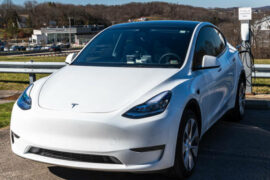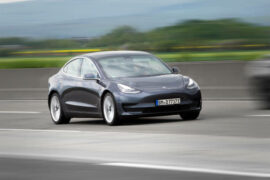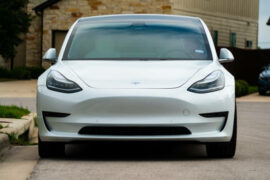Contents
Panel gaps tesla
Panel gaps, those narrow spaces between different components of a vehicle, hold significant weight in the automotive industry. Beyond their functional role in facilitating the smooth operation of doors, hoods, and trunks, these gaps have become a hallmark of perceived quality and design precision. In this realm of scrutiny, Tesla, a trailblazer in the realm of electric vehicles, finds itself in the spotlight for its approach to panel fitment.
As Tesla revolutionizes the automotive landscape with its innovative electric vehicles, the attention to detail in every aspect of design is under the magnifying glass. Panel fitment, or the lack thereof, has sparked discussions and debates, shaping perceptions of Tesla’s commitment to both aesthetics and manufacturing precision. In this exploration, we dive into the significance of panel gaps, the unique position Tesla holds in this narrative, and how the company’s approach to fitment aligns with the ever-evolving standards of the automotive industry.
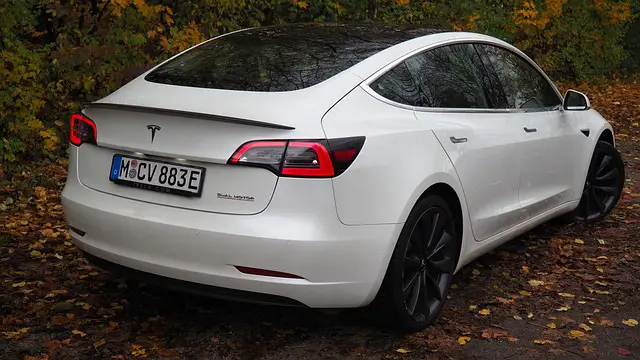
Understanding Panel Gaps
Defining Panel Gaps in Automotive Design:
Panel gaps, in the context of automotive design, refer to the spaces or clearances between various components of a vehicle’s body, such as doors, fenders, hoods, and trunks. These gaps play a crucial role in ensuring the seamless operation and movement of these components. Achieving optimal panel fitment is a meticulous process that involves precision engineering and manufacturing to strike the right balance between functionality and aesthetics.
Critical Aspect of Vehicle Aesthetics and Perceived Quality:
Panel fitment is more than just a technical requirement; it is a critical aspect that significantly contributes to a vehicle’s aesthetics and perceived quality by customers. A well-fitted vehicle exudes a sense of craftsmanship and attention to detail, reflecting positively on the manufacturer’s commitment to delivering a high-quality product. Conversely, visible misalignments or irregular gaps can detract from the overall visual appeal, potentially influencing a customer’s perception of the vehicle’s build quality.
In the eyes of consumers, panel fitment serves as a tangible indicator of the manufacturer’s dedication to precision and excellence. It is a key factor that can elevate the perceived value of a vehicle, especially in segments where attention to detail is a defining characteristic. As we delve into Tesla’s role as a pioneer in electric vehicles, the scrutiny of its approach to panel gaps becomes a lens through which we gauge not just design finesse but also the broader commitment to delivering vehicles that meet or exceed industry standards.
Early Challenges: A Look Back
Exploring the Historical Context of Panel Gap Concerns:
In the early chapters of Tesla’s journey into the automotive landscape, the company faced both acclaim and criticism. As the pioneer of electric vehicles, Tesla brought forth innovations that captured the imagination of consumers worldwide. However, this period also witnessed a closer examination of the finer details, with panel fitment emerging as a notable point of discussion and concern.
Specific Instances and Models Under Scrutiny:
Certain Tesla models, especially those from the initial production phases, found themselves under the lens of scrutiny regarding panel gaps. Enthusiasts and critics alike pointed to instances of perceived misalignments and variations in the clearances between different components. Notably, early versions of the Model S and Model X were subjects of discussion within the automotive community, with owners and observers sharing their observations and experiences related to panel fitment.
While it’s crucial to acknowledge that early challenges were not unique to Tesla, the company’s high-profile status and the close attention it garnered made such concerns more visible. These instances prompted Tesla to reevaluate and refine its manufacturing processes, signaling a commitment to addressing customer feedback and continuously improving the quality of its vehicles.
As we delve into the history of Tesla’s panel gap challenges, it sets the stage for understanding how the company responded and evolved to meet the ever-growing expectations of its discerning customer base. The narrative of early challenges becomes a pivotal chapter in the broader story of Tesla’s commitment to perfection and the ongoing pursuit of automotive excellence.
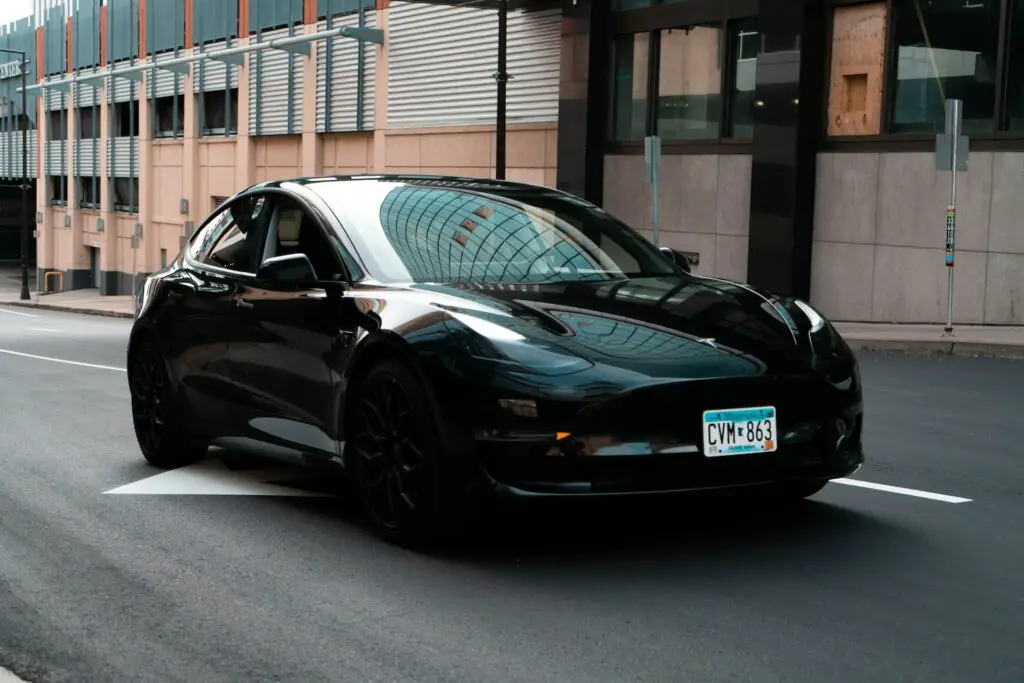
Tesla’s Response: Ongoing Improvements
Examining How Tesla Responded to Early Challenges:
Tesla’s response to early challenges in panel fitment serves as a testament to the company’s agility and commitment to customer satisfaction. As reports and feedback regarding panel gaps gained prominence, Tesla swiftly acknowledged the concerns and took proactive measures to address them. The company’s responsiveness during this phase showcased a dedication to refining its manufacturing processes and meeting the high expectations set by its growing customer base.
Highlighting the Company’s Commitment to Continuous Improvement:
Tesla’s commitment to continuous improvement is ingrained in its ethos, and the scrutiny over panel gaps became a catalyst for positive change. The company embraced a culture of learning from early challenges, leveraging feedback from customers and industry experts to drive enhancements in its manufacturing processes. Tesla’s acknowledgment of imperfections and its commitment to evolving and perfecting panel fitment underscored its dedication to delivering vehicles that not only met but exceeded the evolving standards of the automotive industry.
Refinement in manufacturing processes became a focal point, with Tesla investing in technologies and methodologies aimed at achieving tighter tolerances and higher precision in panel fitment. The company’s emphasis on quality control and attention to detail echoed its aspiration to set new benchmarks in both electric vehicle innovation and manufacturing excellence.
As we explore Tesla’s ongoing journey, it becomes evident that the early challenges related to panel gaps acted as catalysts for positive change. Tesla’s commitment to continuous improvement in response to these challenges positions the company as a dynamic player in the automotive industry, always striving to surpass its previous achievements and set new standards for quality and precision. The narrative shifts from initial concerns to a narrative of resilience and adaptability, emblematic of Tesla’s pursuit of automotive perfection.
Industry Standards and Comparisons
Discussing Industry Standards for Panel Gaps:
Understanding panel gaps requires a broader perspective that considers industry standards and the diverse approaches adopted by automakers. While there isn’t a universal set of specifications for panel fitment, the automotive industry has general guidelines and expectations. These standards encompass tolerances and clearances that ensure functionality and contribute to the overall aesthetics of a vehicle.
Divergent Approaches Among Automakers:
Different automakers approach panel fitment with varying methodologies and priorities. Some may prioritize ultra-tight tolerances, emphasizing a seamless and precise look, while others might adopt slightly looser standards, placing greater emphasis on ease of assembly or durability. This diversity in approaches reflects the unique philosophies and design priorities of each automaker.
Comparative Analysis of Panel Gaps in Tesla Vehicles:
In the context of Tesla vehicles, a comparative analysis of panel gaps involves juxtaposing the company’s approach with the standards prevalent in the luxury car segment. Tesla, often considered a disruptor in the automotive industry, introduced a new paradigm with its electric vehicles. However, the scrutiny on panel fitment drew comparisons with established luxury car manufacturers known for meticulous attention to detail.
Tesla’s panel gaps, especially in earlier models, were subject to scrutiny as they navigated the fine line between innovation and meeting traditional luxury car standards. Comparisons often highlighted nuances in design philosophies, manufacturing techniques, and the balance between aesthetic precision and practical considerations.
As we delve into industry standards and comparisons, it becomes clear that panel fitment is not a one-size-fits-all metric. Rather, it reflects the distinctive approaches and priorities of each automaker. Tesla’s journey in this regard showcases the challenge of breaking new ground in an industry with established norms and the ongoing evolution towards a harmonious balance between innovation and traditional expectations.
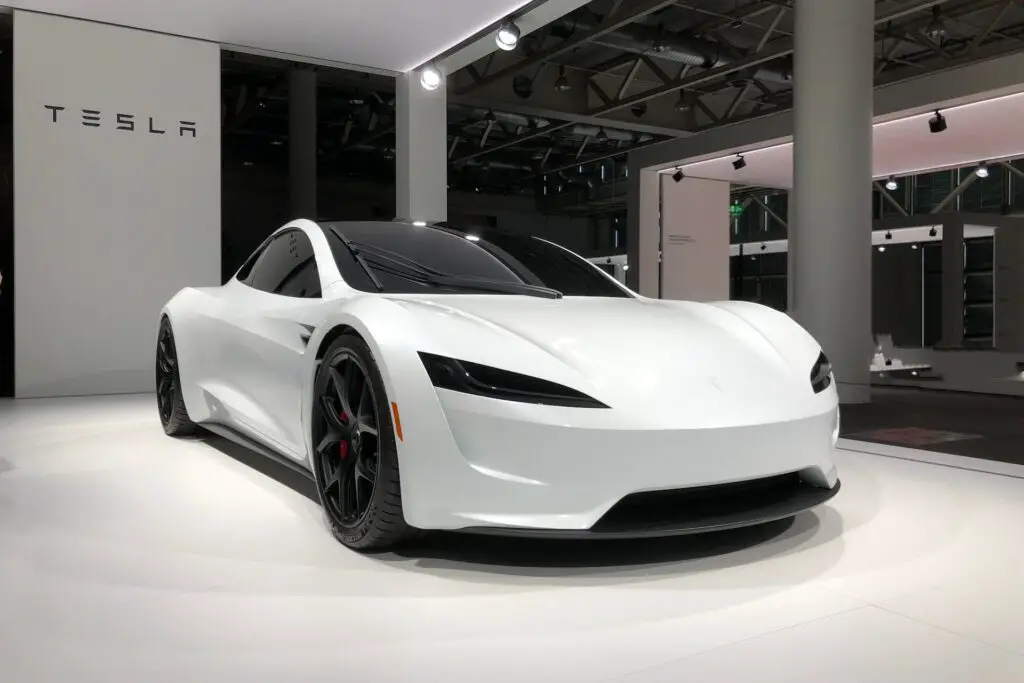
Impact on Perception: Aesthetic vs. Functional
Exploring the Perception of Panel Gaps:
The perception of panel gaps in a vehicle transcends mere aesthetics; it intertwines with the overall narrative of craftsmanship and quality. From an aesthetic standpoint, panel gaps are integral to the visual harmony of a vehicle’s design. A discerning eye can notice even subtle misalignments, influencing how a car is perceived in terms of its build quality and attention to detail.
However, the impact of panel gaps extends beyond aesthetics to the functional realm. Ensuring that these gaps are within acceptable limits is not just about creating a visually pleasing exterior; it’s about guaranteeing the smooth operation of moving components. Doors that close seamlessly, hoods that open with precision – these are functional aspects heavily dependent on well-maintained panel fitment.
How Tesla Ensures Acceptable Limits without Compromising Functionality:
Tesla, cognizant of the dual impact of panel fitment on perception, has implemented measures to ensure that acceptable limits are maintained without compromising functionality. The company employs advanced manufacturing techniques, including robotic assembly and precision engineering, to achieve tight tolerances and consistent panel alignment.
From an aesthetic standpoint, Tesla’s design philosophy emphasizes clean lines and a sleek, modern appearance. The company’s commitment to continuous improvement includes ongoing refinements to manufacturing processes to achieve tighter and more consistent panel gaps. Tesla has embraced a proactive approach, learning from early challenges and implementing changes to address customer feedback and align with industry expectations.
Functionally, Tesla vehicles undergo rigorous testing to ensure that panel gaps do not hinder the operation of moving parts. Doors are designed to close securely, and hoods are engineered for smooth opening and closing. This emphasis on both form and function reflects Tesla’s dedication to delivering vehicles that not only look impressive but also operate flawlessly.
As we navigate the impact of panel gaps on perception, it becomes evident that Tesla’s approach is a delicate balancing act. The company strives to create vehicles that not only meet aesthetic expectations but also exceed functional requirements, setting a standard for electric vehicles in terms of both design finesse and operational excellence.
Continuous Monitoring and Customer Feedback
Highlighting Tesla’s Approach to Customer Feedback:
Tesla’s commitment to excellence goes hand in hand with its proactive engagement with customer feedback, and this holds for the refinement of panel fitment. The company has established a robust system for continuous monitoring, actively seeking insights from customers to enhance various aspects of its vehicles, including the precision of panel gaps.
Tesla’s approach involves more than just receiving feedback; it encompasses a dynamic feedback loop that turns customer experiences into actionable improvements. Owners are encouraged to share their observations and concerns, providing a valuable source of information for Tesla to identify areas for enhancement.
Discussing How Tesla Actively Seeks Insights from Customers:
Tesla has demonstrated a unique ability to leverage its active and engaged customer base as a valuable resource for improvement. The company actively seeks insights from owners through various channels, including forums, social media, and direct communication. This two-way interaction allows Tesla to gather nuanced information about the real-world experiences of its vehicles, including feedback on panel fitment.
When it comes to panel gaps, Tesla takes note of customer-reported issues and utilizes this information to make iterative changes in its manufacturing processes. This collaborative approach between the company and its customers contributes to a culture of continuous improvement, where even minor details like panel fitment are refined based on real-world usage and feedback.
As we delve into Tesla’s commitment to continuous monitoring and customer feedback, it becomes clear that the company views its customers as valuable partners in the journey of improvement. The insights shared by Tesla owners play a pivotal role in shaping the future iterations of Tesla vehicles, reinforcing the idea that customer experiences are not just heard but actively contribute to the evolution of the entire Tesla fleet. This symbiotic relationship positions Tesla as a company that not only listens but acts on customer feedback to elevate the overall quality of its vehicles, including the precision of panel fitment.
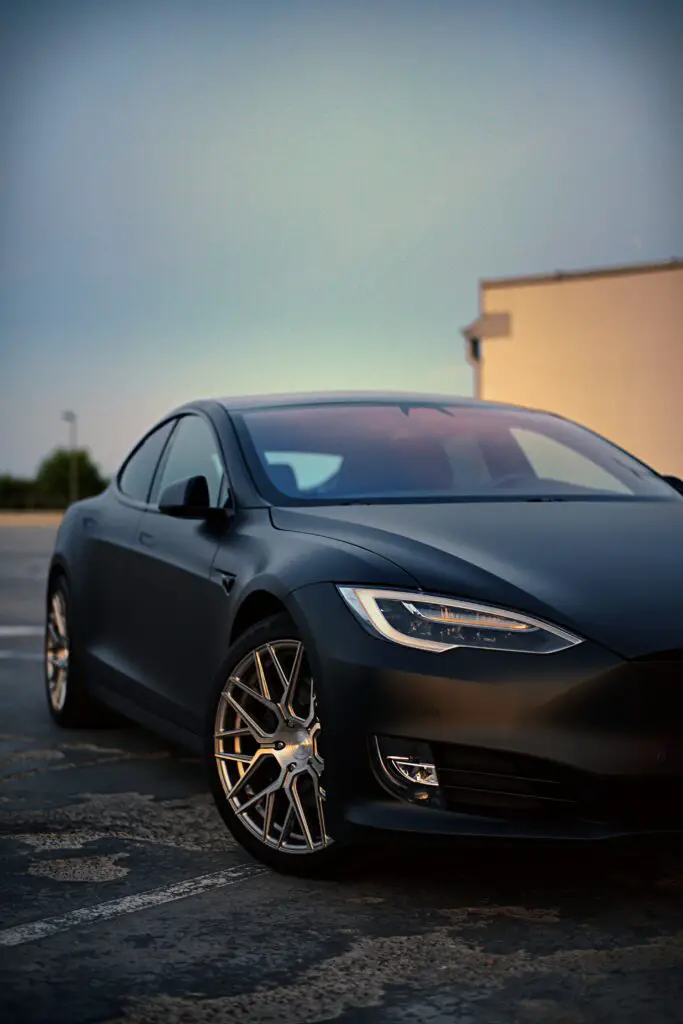
Individual Experiences: Realities and Variations
Acknowledging Variability in Individual Experiences:
In the realm of panel fitment, it’s crucial to recognize that individual experiences can vary widely. The unique journey each Tesla owner takes with their vehicle contributes to a diverse tapestry of observations and opinions. What may be a negligible concern for one owner could become a focal point of attention for another. Acknowledging this variability is essential for a nuanced understanding of how Tesla vehicles are perceived in terms of panel gaps.
Factors Influencing Variations:
Several factors contribute to the variations in individual experiences with Tesla’s panel fitment.
1. Production Timelines: The timing of a vehicle’s production can significantly influence the quality of panel fitment. Tesla’s commitment to continuous improvement means that vehicles produced later in a model year may benefit from refinements made based on feedback from earlier batches.
2. Facility Differences: Tesla operates multiple manufacturing facilities worldwide. Differences in production practices and equipment between these facilities can contribute to variations in panel fitment. Ongoing efforts to standardize processes aim to mitigate these differences over time.
3. Model Iterations: The introduction of new model iterations or updates may bring about changes in manufacturing processes. As Tesla evolves its designs and incorporates new technologies, the impact on panel fitment can vary between different versions of a model.
4. Quality Control Measures: Tesla’s implementation of quality control measures has evolved over the years. Vehicles subjected to more robust quality control measures during production may exhibit better panel fitment compared to earlier models.
By acknowledging these factors, Tesla owners and enthusiasts can contextualize their individual experiences with panel fitment. It also highlights the dynamic nature of Tesla’s manufacturing processes, where lessons learned from earlier production cycles are actively applied to improve the quality and consistency of panel gaps in subsequent vehicles.
As we explore the realities and variations in individual experiences, it becomes evident that the Tesla ownership journey is unique for each individual. Tesla’s responsiveness to feedback and its commitment to ongoing improvements aim to minimize variations and ensure a more consistent and positive ownership experience over time.
Warranty Support and Service Centers
Explaining Tesla’s Warranty Coverage:
Tesla offers a comprehensive warranty that covers defects in materials and workmanship. This warranty is designed to assure Tesla owners, addressing concerns related to the build quality of their vehicles, including aspects like panel fitment. Understanding the specifics of Tesla’s warranty coverage is crucial for owners seeking resolution for any issues, including those related to panel gaps.
Tesla’s warranty typically covers:
Defects in Materials: This includes issues arising from the quality of materials used in the manufacturing of the vehicle.
Defects in Workmanship: This pertains to problems arising from the manufacturing process itself, encompassing issues related to assembly and build quality.
Duration of Coverage: Tesla’s warranty coverage often extends for a specified period, and owners are encouraged to familiarize themselves with the terms and duration of coverage outlined in their specific warranty documents.
Guiding Customers on Approaching Tesla’s Service Centers:
If Tesla owners encounter concerns related to panel gaps or any other aspect covered by the warranty, the following steps can be taken:
Document the Issue: Before approaching a service center, it’s helpful to document the specific panel gap concerns. Clear photographs and a detailed description of the issue will aid Tesla’s service team in understanding and addressing the problem.
Contact Tesla Support: Tesla owners can reach out to Tesla’s support team through official channels, including the Tesla app or the online customer support portal. Communicate the concerns, providing all necessary details.
Schedule a Service Appointment: Tesla owners can schedule a service appointment through the Tesla app or website. During the appointment, Tesla’s service technicians will assess the reported issues, including panel fitment concerns.
Professional Assessment: Tesla’s service centers have trained technicians who will conduct a professional assessment of the reported concerns. This may involve physical inspections, diagnostics, and, if needed, adjustments or replacements to address the panel gap issues.
Utilize Warranty Coverage: If the panel gap concerns are determined to be within the scope of Tesla’s warranty coverage, the necessary repairs or adjustments will typically be performed at no additional cost to the owner.
By following these steps, Tesla owners can navigate the process of addressing panel gap concerns through Tesla’s warranty support and service centers. Tesla’s commitment to customer satisfaction is reflected in its proactive approach to resolving issues covered by warranty, ensuring that owners can enjoy a positive and hassle-free ownership experience.
Looking Forward: Tesla’s Commitment to Perfection
As we reflect on the intricacies of panel fitment in Tesla vehicles, several key points emerge. From the early challenges that drew attention to panel gaps to Tesla’s responsive measures and ongoing improvements, the journey underscores the company’s dynamic approach to perfection. We navigated through industry standards, the impact on perception, and the vital role of continuous monitoring and customer feedback. Individual experiences were acknowledged for their unique nuances, influenced by factors like production timelines and facility differences. Exploring Tesla’s warranty support and service centers shed light on the mechanisms available for addressing concerns.
Emphasizing Tesla’s Ongoing Commitment:
Looking forward, the narrative extends beyond the challenges of the past to Tesla’s unwavering commitment to perfection. Tesla’s approach to panel fitment has evolved, shaped by feedback, customer insights, and a relentless pursuit of excellence. The company’s dedication to maintaining high-quality standards serves as a driving force in its ongoing journey.
Tesla’s commitment to perfection is not static; it’s a dynamic ethos woven into the fabric of its operations. The scrutiny of panel gaps becomes a catalyst for continuous improvement, with each iteration of a Tesla vehicle reflecting refinements and advancements. The company’s responsiveness to customer feedback and proactive engagement in addressing concerns position Tesla as a leader not just in electric vehicles but in the broader spectrum of automotive quality.
In conclusion, as Tesla looks forward, it does so with an eye on the horizon of automotive innovation and an unwavering commitment to perfection. The scrutiny over panel fitment becomes a narrative thread in the broader tapestry of Tesla’s evolution, a testament to a company that embraces challenges as opportunities for growth. Tesla owners and enthusiasts can anticipate a future where each model surpasses its predecessor, not just in technological prowess but in the meticulous craftsmanship that defines the Tesla experience. In this journey, panel fitment becomes not just a measure of aesthetics but a symbol of Tesla’s relentless pursuit of automotive excellence.

Concluding Tesla’s Journey Toward Automotive Excellence:
In the dynamic landscape of automotive innovation, the discussion around panel gaps in Tesla vehicles becomes a compelling chapter in the broader narrative of Tesla’s journey toward automotive excellence. The scrutiny, challenges, and iterative improvements all weave together to form a story of evolution and dedication to perfection. Tesla, as a pioneer in electric vehicles, has not shied away from acknowledging imperfections but has embraced them as steppingstones toward continuous refinement.
As we conclude this exploration, it’s essential to recognize that the road ahead for Tesla is one marked by innovation, responsiveness, and an unyielding commitment to delivering vehicles that not only meet but exceed expectations. The discussion around panel gaps is not a static critique but a dynamic element in Tesla’s relentless pursuit of setting new standards in the automotive industry.
Encouraging Informed Engagement:
For Tesla owners, enthusiasts, and those intrigued by the brand, staying informed and engaged in ongoing developments in Tesla’s manufacturing processes is a key aspect. The journey toward perfection involves constant learning, adaptation, and a keen understanding of how each feedback loop contributes to Tesla’s evolution.
As Tesla introduces new models, updates existing ones, and refines manufacturing techniques, informed engagement from the community becomes a catalyst for positive change. Tesla owners are not just passengers; they are active participants in the ongoing story of Tesla’s pursuit of automotive excellence. The discourse around panel fitment is part of a broader conversation that shapes the future of electric vehicles and influences industry standards.
In conclusion, as we navigate the road ahead with Tesla, let’s remain vigilant, curious, and engaged. Tesla’s commitment to perfection is a journey with no final destination, and each step forward brings us closer to a future where electric vehicles redefine not just transportation but the very standards by which we measure automotive excellence. So, buckle up, stay informed, and be a part of the exciting chapters yet to unfold in the remarkable story of Tesla.

